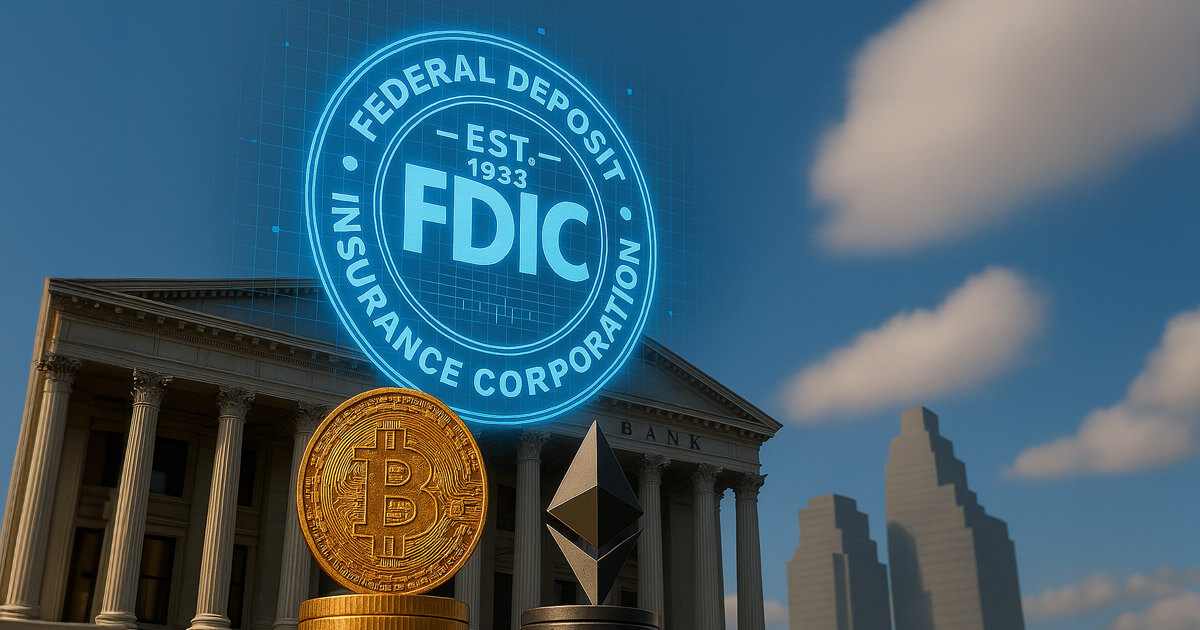The Federal Deposit Insurance Corporation (FDIC) is formalizing a more permissive and transparent framework for US banks engaging with crypto, including the use of public, permissionless blockchains.
In remarks delivered at the American Bankers Association Washington Summit on April 8, FDIC Acting Chairman Travis Hill addressed the agency’s evolving stance on crypto-related activities.
Guidelines for engagement with public blockchains
One key area under review involves the interaction between regulated banks and public, permissionless blockchains.
Hill acknowledged that while jurisdictions outside the US have permitted banks to use public chains for several years, US banking regulators have maintained a significantly more cautious posture.
The FDIC now considers a total prohibition on public blockchain use too restrictive. However, Hill stressed the need for appropriate guardrails to govern such activity.
The agency is evaluating existing interagency guidance, including the joint statements issued in January and February 2023, to develop durable standards for the responsible use of public networks.
The question of whether public chains can operate in a permissioned mode is also considered. According to Hill, regulators must assess how to define and supervise blockchain configurations that blur the line between open and permissioned environments.
FDIC to issue further guidance
The FDIC said it intends to release additional guidance addressing specific digital asset use cases.
According to Hill, the agency continues to assess open questions related to the scope of permissible crypto-related activities, the supervisory treatment of blockchain-based products, and the risk management expectations for banks operating in this space.
The broader objective is to establish a consistent and transparent supervisory framework that enables innovation while ensuring adherence to safety and soundness standards.
Hill recently noted that the agency’s revised guidance represents a foundational shift in how to treat crypto and blockchain technologies within the US banking system.
He emphasized that the FDIC rescinded its previous requirement for supervised institutions to notify the agency before engaging in digital asset and blockchain activities.
Stablecoin regulations and deposit insurance frameworks
Hill also addressed emerging questions surrounding stablecoins, particularly regarding legislative moves by Congress.
The FDIC examines potential pass-through deposit insurance regulations updates to clarify eligibility requirements for stablecoin reserve deposits. Key issues under evaluation include liquidity risk management, safeguards against illicit finance, and cybersecurity standards.
In 2020 and 2021, the Office of the Comptroller of the Currency (OCC) deemed several crypto-related services permissible for national banks, such as stablecoin custody and issuance, participation as blockchain validator nodes, and the acceptance of stablecoin-related deposits.
The FDIC is now considering whether to further define the boundaries of permissible activities in this area or expand the regulatory guidance to include additional use cases.
Tokenized deposits and smart contract risks
The speech also highlighted the need for clearer regulatory treatment of tokenized real-world assets and liabilities, including tokenized commercial bank deposits. Hill said the FDIC believes that “deposits are deposits, regardless of the technology or recordkeeping deployed.”
However, he raised concerns about counterparties’ ability to withdraw funds at par using smart contracts after a bank failure, which could increase resolution costs if safeguards are not in place to halt such flows.
This concern is driving internal FDIC efforts to assess technical solutions that could prevent unintended fund outflows during bank resolution scenarios.
Hill noted that the challenge lies in aligning on-chain programmability with traditional regulatory protections designed to ensure the orderly winding down of failed institutions.
The FDIC’s changes mark a formal move toward regulatory clarity for banks exploring digital asset infrastructure while emphasizing the need for prudent risk controls and further definitional work around permissible activities.





